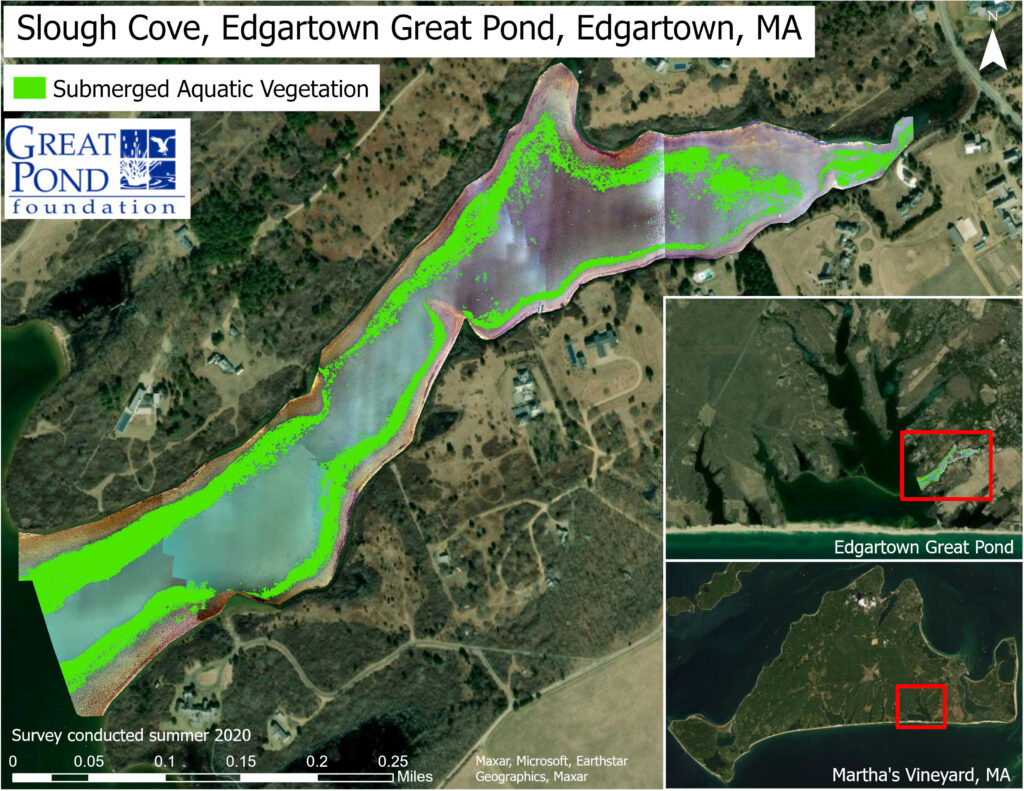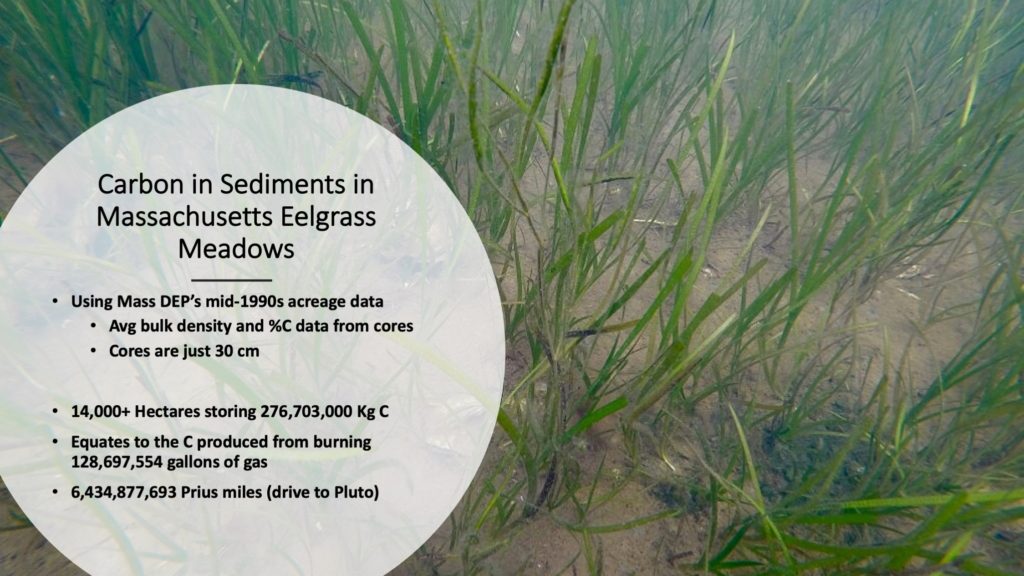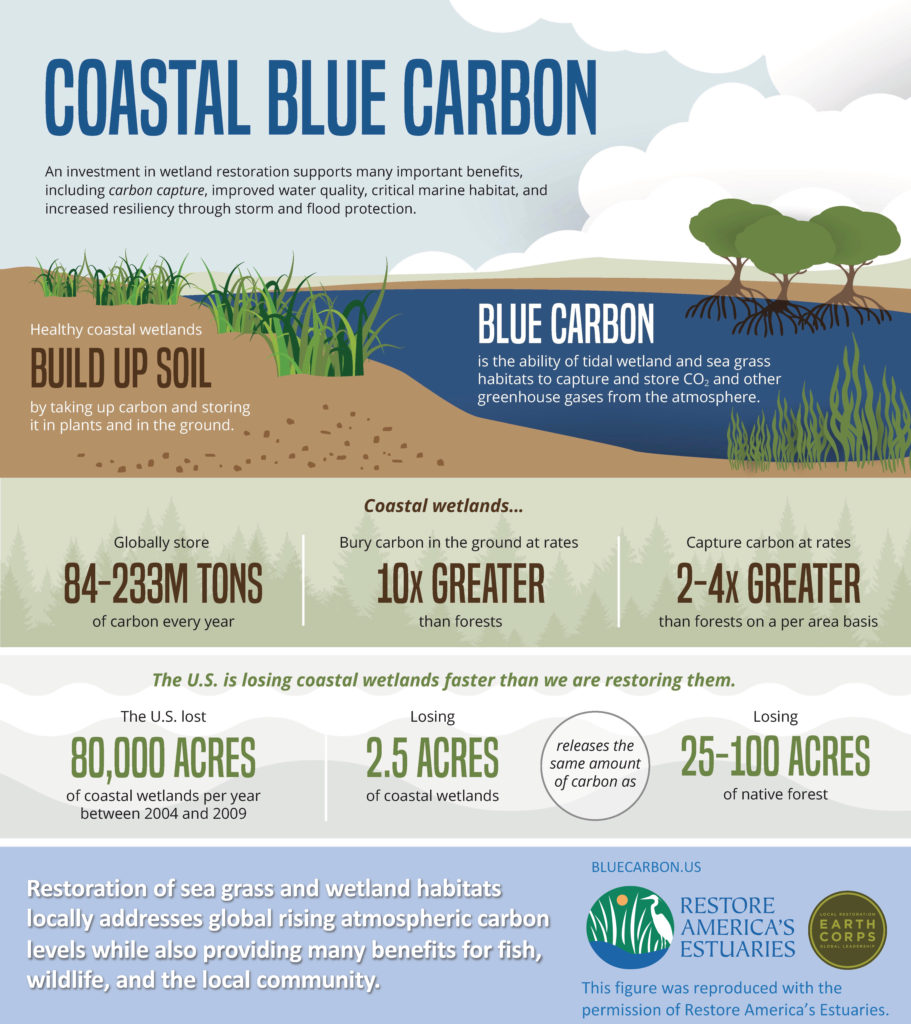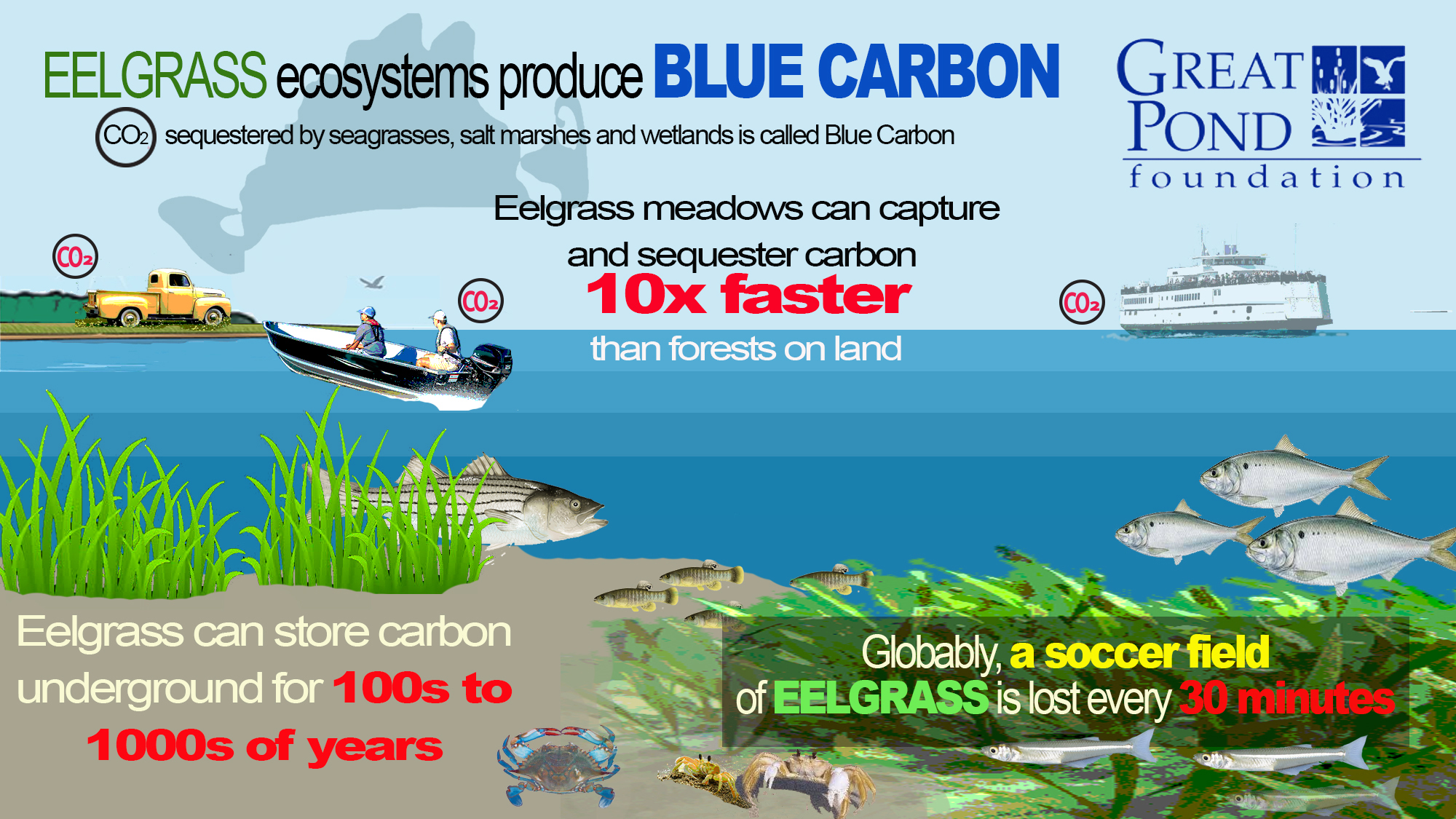Blue Carbon
BLUE CARBON is the carbon sequestered by coastal marine ecosystems. Coastal ecosystems are capable of removing large amounts of carbon from the atmosphere and storing it for centuries to millennia.
This work is made possible by a 2020 Edey Foundation Grant.

Coastal seagrasses and wetlands remove carbon from the atmosphere and help to combat climate change. In Edgartown Great Pond, the native eelgrass meadows store carbon in the sediments of the Pond floor. When water quality improves as a result of restoration efforts, we cultivate a habitat where eelgrass can proliferate. Protecting the island coastal ecosystems is an investment in local conservation with global impact.
How much BLUE CARBON is stored locally?
A grant from the Edey Foundation in collaboration with the Martha’s Vineyard Commission and with guidance from EPA Scientist Phil Colarusso helped us answer this question. Learn more about this project.
One cove of one pond on Martha’s Vineyard contains ~500 tons of BLUE CARBON! How much do you think the whole Island contains?

Estimate Seagrass Coverage in Slough Cove, Edgartown Great Pond
Method A – Simplified Polygon Area Estimate
418 tons of BLUE CARBON

Method B – Maximum Likelihood Classification Area Estimate
532 tons of BLUE CARBON


According to Phil Colarusso, seagrass expert and EPA scientist, eelgrass meadows are basically carbon sponges. Not only do they take carbon dioxide out of the water through photosynthesis (a metabolic process that changes CO2 and H2O into sugar) but all of the carbon stored in plankton and other water creatures gets absorbed into the sediments of eelgrass meadows. If we restore eelgrass meadows, we take carbon out of the atmosphere. But, the reverse is true if we disturb, destroy, or lose eelgrass meadows—we are essentially putting carbon back into the atmosphere.
Local Conservation has Global Impacts


